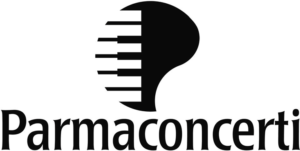Beginner’s Guide to Financial Statements The Motley Fool
A cash flow statement is a financial statement that provides details on the money flowing into and out of a business during a given time period. As the name implies, the central purpose is to show the amount of cash flowing into a business, and it can be very useful when analyzing the financial health of a company. The preferred stockholder obtains the preferred stock at a higher price and gets a pre-approved dividend at specified intervals. Preferred stock is sometimes considered a hybrid of a bond and common stock since the dividends are pre-defined unlike common stock. On a balance sheet, both stock types would be listed under the shareholder equity section of the report. U.S.-based companies are required to report under generally accepted accounting principles (GAAP).
- A company’s income statement tells you how much money a company brought in and how much of a profit (hopefully) it earned from that revenue.
- However, we add this back into the cash flow statement to adjust net income because these are non-cash expenses.
- Free cash flow is the available cash after subtracting capital expenditures.
Investors typically monitor capital expenditures used for the maintenance of, and additions to, a company’s physical assets to support the company’s operation and competitiveness. In short, investors want to see whether and how a company is investing in itself. Other expenditures that generate cash outflows could include business acquisitions and the purchase of investment securities. Earnings happen in the present when a sale and expense are made, but cash inflows and outflows can occur at a later date. It is important to understand this difference when managing business payments. Ongoing positive cash flow points to a company that is operating on a strong footing.
Cash Flow Statement: Analyzing Cash Flow From Financing Activities
If it is a negative number, it means that the company is returning money to investors or paying back debts. Importantly, capital expenditures are accounted for immediately on the cash flow statement. But the expenses are spread out over several years on the income statement. The operating cash flow, listed as “cash generated by operating activities,” shows that Apple generates a lot of cash from its main business ($69 billion in 2019 alone). Analysts use the cash flows from financing section to determine how much money the company has paid out via dividends or share buybacks. It is also useful to help determine how a company raises cash for operational growth.
- While it gives you more liquidity now, there are negative reasons you may have that money—for instance, by taking on a large loan to bail out your failing business.
- A negative figure indicates when the company has paid out capital, such as retiring or paying off long-term debt or making a dividend payment to shareholders.
- If Example Corporation issues additional shares of its common stock, the amount received will be reported as a positive amount.
- Meaning, even though our business earned $60,000 in October (as reported on our income statement), we only actually received $40,000 in cash from operating activities.
By looking at the cash flow statement, one can see whether the company has sufficient cash flowing in to pay its debts, fund its operations, and return money to shareholders via dividends or stock buybacks. The activities included in cash flow from investing actives are capital expenditures, https://accounting-services.net/funds-statement-financial-definition-of-funds/ lending money, and the sale of investment securities. Along with this, expenditures in property, plant, and equipment fall within this category as they are a long-term investment. The net cash flows generated from investing activities were $46.6 billion for the period ending June 29, 2019.
Why cash is different from income
The capital expenditures are usually listed as “purchases of property, plant, and equipment” or something similar. It implies that the company is not generating enough cash to sustain itself, let alone having cash left over to pay its debts. Because of this, it is crucial to look at the cash flow statement along with the income statement to get a clearer picture of a company’s financial situation. Positive cash flow indicates that a company has more money flowing into the business than out of it over a specified period.
Preferred Stock on Balance Sheet
Without a steady stream of cash, most companies go out of business very quickly. This cash flow statement shows Company A started the year with approximately $10.75 billion in cash and equivalents. In the case of accounting, flow implies the total value of transactions, relating to the purchases and sales of goods, that took place during a particular financial year. So, what we have understood with the given examples is that stock implies the reserve of inventory or funds, on a specific date. But when we talk about flow, it refers to the inflow or outflow of any economic variable, over a period of time. Usually we can clearly distinguish inflows (adding to the stock) and outflows (subtracting from the stock).
Why Cash Flow Analysis Is Important
Public companies have to file regular reports with the Securities and Exchange Commission (SEC) and a cash flow statement is one of the required documents. For this reason, companies must accurately tell the appropriate cash flow story. The first section of the statement of cash flows is described as cash flows from operating activities or shortened to operating activities.
The completed statement of cash flows, which we’ll work towards computing throughout our modeling exercise, can be found below. Under the indirect method, the format of the cash flow statement (CFS) comprises of three distinct sections. A cash flow statement lays out the sources of your cash and where you have used it. Study a statement to determine where changes might be made to better utilize cash, run a business more efficiently, and grow it more effectively.
Continued negative cash flow may indicate a company is in financial trouble. Both common and preferred stock are part of shareholder equity in the balance sheet equation. Common stock is more likely to be liquidated than preferred stock because common stockholders are completely reliant on the company profits for their profits. Raising equity is generally seen as gaining access to stable, long-term capital. The same can be said for long-term debt, which gives a company flexibility to pay down debt (or off) over a longer time period. Large, mature companies with limited growth prospects often decide to maximize shareholder value by returning capital to investors in the form of dividends.


